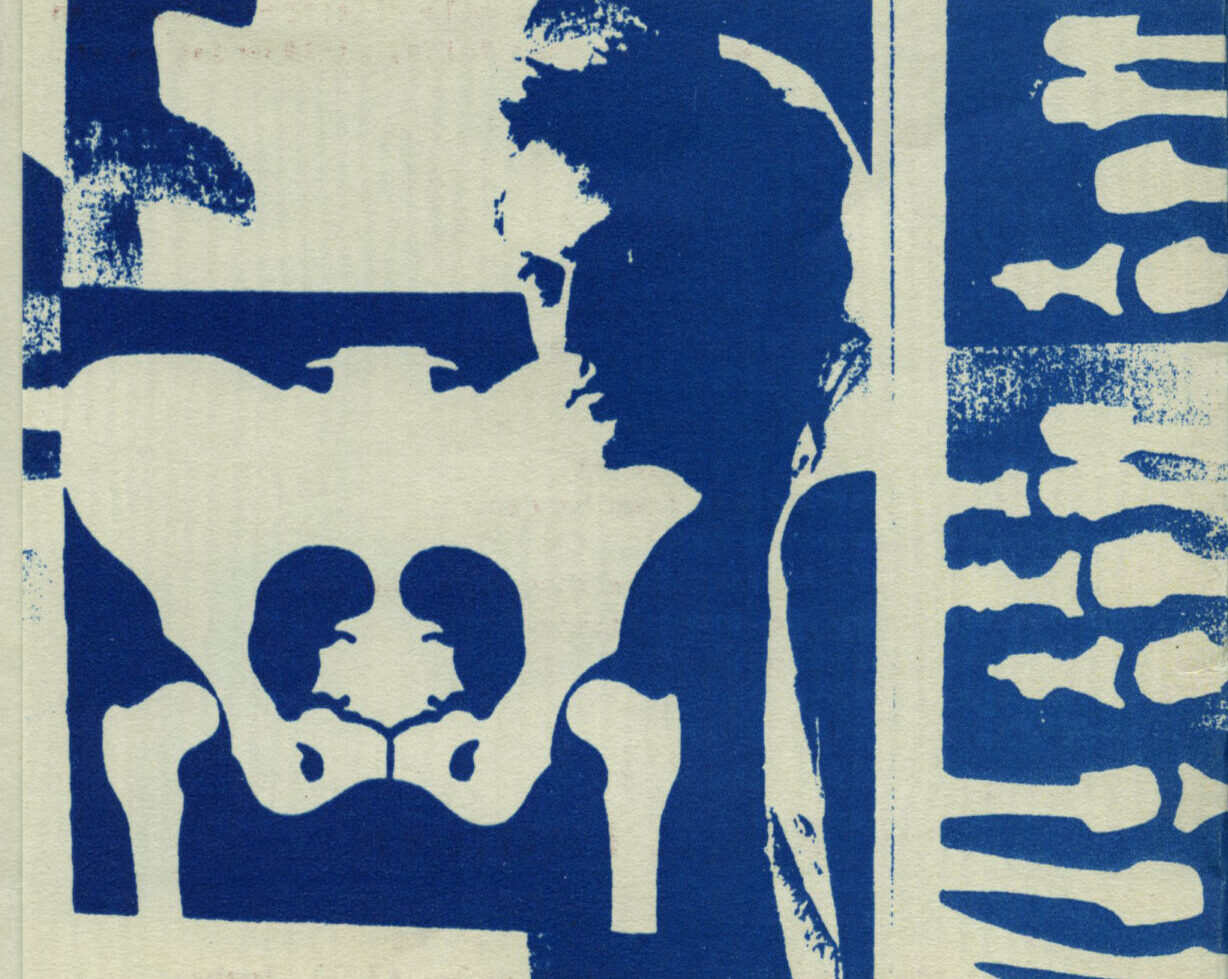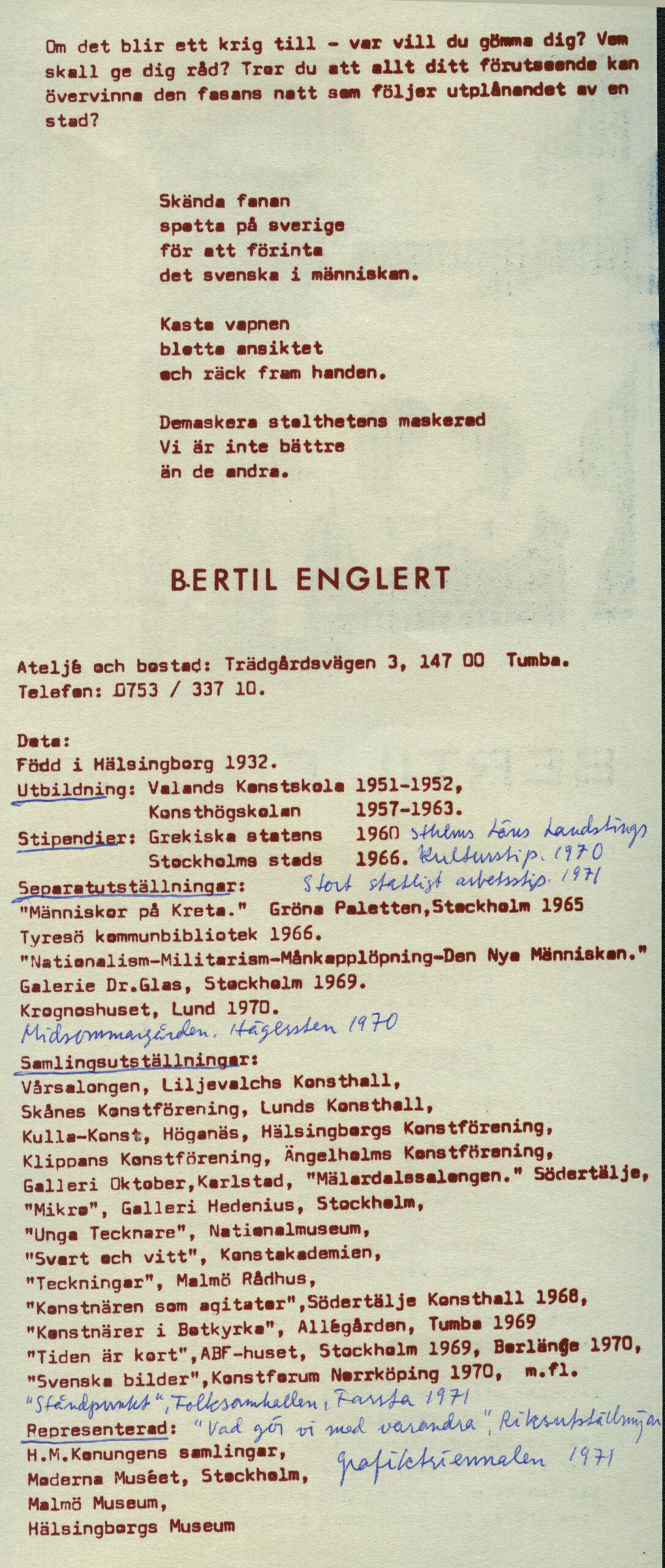
Södertälje konsthall
Exhibitions
1972
Bertil Englert
By Bertil Englert,
Bertil Englert
By Bertil Englert,
Bertil Englert
By Bertil Englert,
Bertil Englert
By Bertil Englert,
Bertil Englert
By Bertil Englert,
Bertil Englert
By Bertil Englert,
Bertil Englert
By Bertil Englert,
Exhibitions
1972
Bertil Englert
By Bertil Englert,

Ur arkivet, visades
15/01 – 06/02, 1972
Bertil Englert was born in 1932 in Helsingborg but at the time of this exhibition lived in Tumba just outside Södertälje. He formulated his view of art clearly in the catalog for the exhibition. The message is central.
When you want to question the function of art, you have to do it in the form of art, but in my opinion you should do it with thoughtful or provocative images. The audience must become aware and take a stand. In this way, one can turn pleasure into communication. An art exhibition should be a message, not just an art exhibition.
You have to put the words in context with a spirit of the times, he continues.
Many of today’s radicals want to completely reject art, which they regard as an unnecessary luxury. “Art is shit” was, for example. one of the field cries during the Paris Revolt.
The Art Gallery’s then curator Ingvar Claeson tells in the preface about his meeting with Englert in the studio. He writes about pictures in strong beautiful colors. Reflects on how nationalism, regardless of which country one comes from… can cause whitening bone knots. Bone knots that loaded symbols in Englert’s paintings. Our legs. Can we not scrap nationalism, mix the symbols, confuse, change signs./…/ That the dream of peace is common to all the peoples of the earth. (see scanned text in full)
In the exhibition catalogue, you can also read ready-made comments on Englert’s work. It is not clear whether it was Englert himself or the intent Claeson who commented on the pictures. Texts for titles such as Monument to Militarism, The Moon and the Bomb, The Relationship USA – China, Nationalism, The Universal Soldier, The Medals of Mankind, The Man of Power, The Dream of Peace. The critique of civilization is touched on from both a national and global perspective. Soldiers, weapons, war, power under all the flags of the world. Text to the artpiece Worldview:
The Earth of Today – it is still spinning, but is completely surrounded by the threat of overpopulation, fascism and world domination. This background is compressed into a series of space capsules, which circle around the globe. The capsules are skeletal parts and their dance around the earth forms a swastika, neat and elegant, white and clean – on the surface.
It is still the early 70’s when Englert’s exhibition is shown. Art as a political message, with ready-made interpretations for those who want. A clearer way of relating. How are perspectives shaped today on the art-scene. How do you put the spotlight on today’s realities and on the worldview? How is the light?
Sources: The Art Gallery’s archive folder. Text and compilation: Anneli Karlsson
Bertil Englert: Internationalen, Folkets Hus utställningshall, Södertälje 15 January – 6 February 1972
